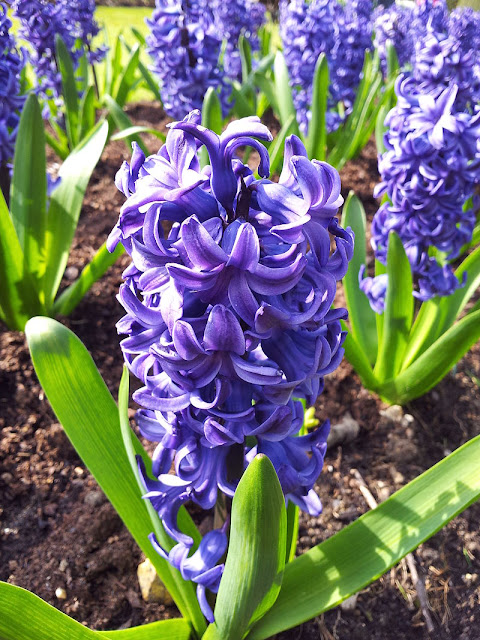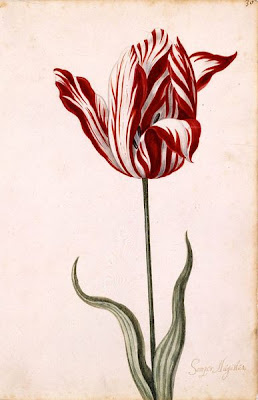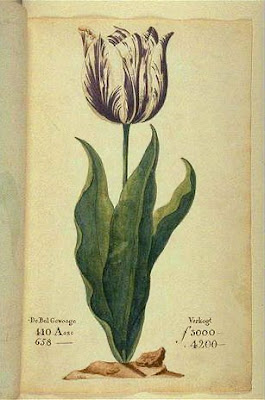When it comes to propagating daffodils there are only two effective techniques that the gardener can employ - natural division by offset bulbs or bud initiation by scoring. Although daffodil seed viability is good, seed collection is not an effective way of propagating specific cultivars. Not only can it take between 5-7 years for a seedling to bloom, with so many modern hybrids around you cannot guarantee either the shape or the colour your seedlings flower due to the high risk of further hybridization.
The easiest method is to let nature do its thing as daffodil bulbs will naturally reproduce by division as part of their yearly growing cycle. They are classed as tunicate bulbs as they are made up of a sequence of specialized fleshy and very broad scale leaves. As they grow the outer leaves become dry and membranous which help to protect the bulb against drying out. During the growing season apical buds will develop from the parent plants basal plate, which in time will produce the new flowering bulbs. However it will take at least another year before they are ready for separation and flowering.
The best time to remove these new bulbs is in late summer after the flower stalks have fully dried off. Carefully lift the bulbs and detach them from the parent bulb. They can then be planted into a fertile, free draining soil at approximately twice their own depth. Try to choose a site that has an open and sunny location away from excessive damp and strong winds.
With regards to propagating bulbs by scoring you can expect to produce far more bulbs using this technique than by using the natural division method. The process involves making two cuts at right angles through the bulbs basal plate. Using a sharp knife, make each cut to a depth of about 5 mm then allow the scored bulb to stand in a warm environment - at approximately 21 degrees Celsius - for 24 hours. This allows the cuts to open which can then be treated with a dusting of fungicide to prevent rots from developing. Set the bulb upside down on either a raised wire mesh or a tray of dry sand. Place back into a temperature of 21 degrees Celsius as this will encourage callusing which also helps to prevent infection from rots. Keep the bulb as dry as possible without it actually drying out. If resting on sand, you may wish to dampen it occasionally.
Within three months new bulbs would have developed on the cut surfaces. You can now plant the parent bulb on into a pot, but again it will need to be placed upside with the new bulbs just below the surface of the compost. In March the pot can be taken outside for hardening off. The new bulbs will then start to grow properly producing roots and leaves while the parent bulb slowly disintegrates as carbohydrates and nutrients are transferred on to its progeny. Bulbs that are produced this way usually only need to be grown on for a further two years before they are mature enough to start flowering. This method takes just as long as natural division but you can end up with three to four times the number of bulbs.
Main image credit - First Light under https://creativecommons.org/licenses/by-sa/3.0/deed.en
For related articles click onto the following links:
The easiest method is to let nature do its thing as daffodil bulbs will naturally reproduce by division as part of their yearly growing cycle. They are classed as tunicate bulbs as they are made up of a sequence of specialized fleshy and very broad scale leaves. As they grow the outer leaves become dry and membranous which help to protect the bulb against drying out. During the growing season apical buds will develop from the parent plants basal plate, which in time will produce the new flowering bulbs. However it will take at least another year before they are ready for separation and flowering.
With regards to propagating bulbs by scoring you can expect to produce far more bulbs using this technique than by using the natural division method. The process involves making two cuts at right angles through the bulbs basal plate. Using a sharp knife, make each cut to a depth of about 5 mm then allow the scored bulb to stand in a warm environment - at approximately 21 degrees Celsius - for 24 hours. This allows the cuts to open which can then be treated with a dusting of fungicide to prevent rots from developing. Set the bulb upside down on either a raised wire mesh or a tray of dry sand. Place back into a temperature of 21 degrees Celsius as this will encourage callusing which also helps to prevent infection from rots. Keep the bulb as dry as possible without it actually drying out. If resting on sand, you may wish to dampen it occasionally.
Within three months new bulbs would have developed on the cut surfaces. You can now plant the parent bulb on into a pot, but again it will need to be placed upside with the new bulbs just below the surface of the compost. In March the pot can be taken outside for hardening off. The new bulbs will then start to grow properly producing roots and leaves while the parent bulb slowly disintegrates as carbohydrates and nutrients are transferred on to its progeny. Bulbs that are produced this way usually only need to be grown on for a further two years before they are mature enough to start flowering. This method takes just as long as natural division but you can end up with three to four times the number of bulbs.
For related articles click onto the following links:


























